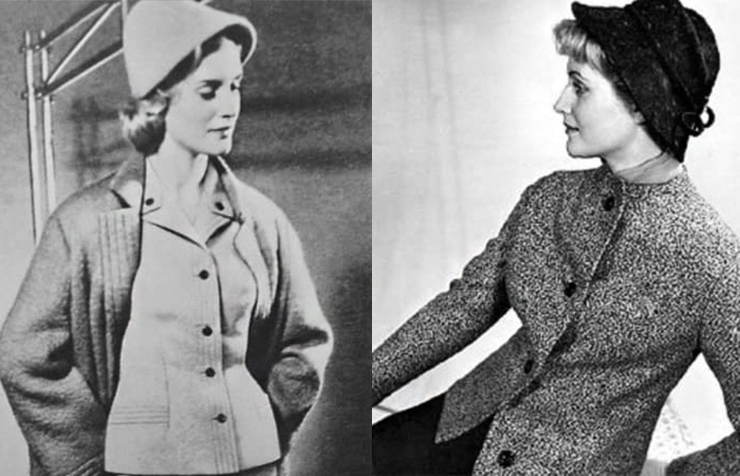
Fashion is often considered a symbol of the cultural ethos of a society, a reflection of its values, aspirations, and history. While the Western world has long been associated with the glitz and glamour of haute couture and global fashion capitals, the narrative of fashion in the Soviet Union remains a relatively enigmatic chapter in the annals of style and design. Behind the veil of the Iron Curtain, the USSR grappled with a complex relationship with fashion, balancing ideological constraints with creative expressions. Despite the challenges, a handful of iconic Soviet models emerged, leaving an indelible mark on the fashion landscape of the time.
Valentina Yashina, with her enigmatic charm and distinctive features, captivated the Soviet fashion scene during the 1960s. Yashina’s elegant poise and effortless grace personified the subtle sophistication sought after in the Soviet fashion sphere. Her collaborations with prominent Soviet designers brought forth a fusion of traditional elements with contemporary silhouettes, demonstrating a nuanced interpretation of Soviet chic. In addition, the House of Models in the Soviet Union was one of the few places that gave its most beautiful and successful models the opportunity to travel abroad, which at that time was the height of prestige and success. Despite her fame and demand, Yashina, unlike her Western model colleagues, did not become a millionaire. Her profession in the USSR was officially called a “clothing models’ demonstrator”, and this work was paid very mediocrely.
Regina Zbarskaya, known for her bold and audacious presence, redefined the boundaries of Soviet fashion with her daring persona. Zbarskaya’s ventures into avant-garde fashion challenged the conservative norms, infusing the Soviet style with a touch of rebelliousness. Her collaborations with emerging designers sparked a wave of experimentation, pushing the boundaries of creativity within the confines of the Soviet fashion milieu. “The most beautiful weapon of the Kremlin”, as the prominent Soviet model was called in Paris, where she enjoyed impressive success. Unlike most of her colleagues, Regina was not shy about the modeling business. Although there were reasons for that, because the work of fashion models in the USSR was not considered honorable. The girls were assigned the specialty of a “fifth-class worker”, and since their occupation was not among the hard ones, they were paid little. However, Zbarskaya considered the runway as a springboard that could take her to new heights.
Leocadia “Lyoka” Mironova, with her ethereal beauty and magnetic aura, represented the epitome of timeless elegance in the Soviet fashion. Mironova’s association with renowned Soviet fashion houses brought forth a revival of classic aesthetics, emphasizing the importance of refined tailoring and understated glamour. Her contribution to the portrayal of Soviet elegance resonated beyond the geographical boundaries, earning her a place of reverence in the Soviet fashion history. Mironova became the first fashion model to speak in an interview about problems in the modeling business. According to her, the girls were constantly monitored by KGB officers, who forbade them to communicate with foreigners at the fashion shows. Moreover, all gifts from delegations were confiscated from them, and they had to buy cosmetics at their own expense. Since 1970, Mironova’s career began to decline and she voluntarily left the Model House. One of the reasons for this decision was courtship from a high-ranking Soviet official which she refused of.
Lyudmila “Mila” Romanovskaya, renowned for her effervescent energy and infectious charm, embodied the spirit of youthful exuberance in the Soviet fashion industry. Romanovskaya’s collaborations with emerging Soviet designers paved the way for a new wave of contemporary fashion, integrating vibrant colors and eclectic patterns into the fabric of Soviet style. Her dynamic presence on the runway encapsulated the evolving spirit of Soviet fashion, embracing a blend of traditional motifs and modern sensibilities. Mila was attracted by the prospect of going abroad, because the girl so wanted to see the world. Romanovskaya said in an interview that the USSR several times tried to recruit her into the KGB, catching her in the streets and making calls to her home. However, luckily for her, the recruitment failed. Romanovskaya went down in history as one of the first Soviet models who managed to successfully emigrate — first to Israel and then to England.
Tatiana Chapygina, known for her fierce determination, left an indelible mark on the Soviet fashion scene with her trailblazing spirit. Chapygina’s commitment to promoting indigenous Soviet textiles and craftsmanship reinforced the significance of preserving the cultural heritage within the realm of fashion. Her endeavors to integrate folkloric elements into contemporary designs resonated with the growing emphasis on celebrating the richness of Soviet traditions within the fashion narrative. Tatyana first went abroad in 1979 to the GDR, then to the United States, Japan and other countries. Previously, all contacts with foreigners were prohibited and therefore all the courtship attempts with Soviet girls was immediately stopped. In the 80s, she unexpectedly met an Austrian entrepreneur in her homeland. After the next show, a man approached her and invited her to have coffee with him. She immediately liked him but kept her admirer at a distance, as she was afraid of KGB. The foreigner captivated her with his talent in cooking and she decided that family life was much more valuable than a career of a fashion model. At that time she was 35 years old, so she decided to leave the modeling business.
Despite the stringent constraints imposed by the political and ideological climate of the Soviet era, these iconic Soviet models, alongside a cohort of visionary designers, contributed to the evolution of a distinctive Soviet fashion identity. Their collective endeavors not only redefined the Soviet style aesthetic but also demonstrated the resilience and creativity that thrived beyond the Iron Curtain. As the world continues to unravel the intricacies of Soviet history, the legacy of these trailblazing models stands as a testament to the enduring spirit of creativity and innovation within the Soviet fashion domain.
The post Beyond the Iron Curtain: Was there fashion in the USSR? appeared first on The Fashiongton Post.
